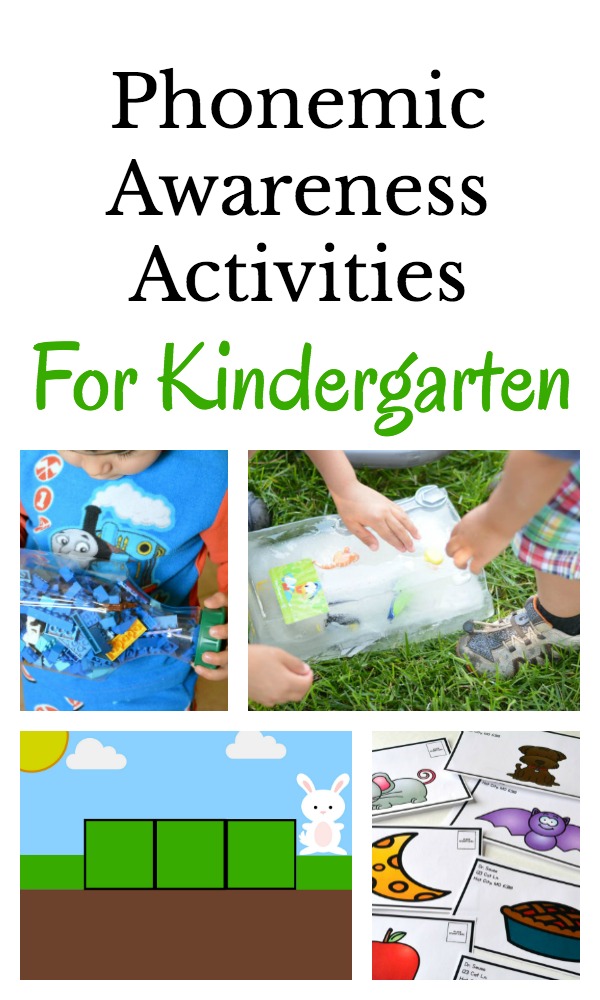Do you have kindergarteners at the beginning of their learning to read journey? Having a strong sense of phonemic awareness, which is a part of phonological awareness, is a big stepping stone on this path to reading. These phonemic awareness activities for kindergarten will help young children develop this crucial skill.

Phonemic awareness which falls under the umbrella of phonological awareness is all done orally. There is no visual representation of the letters to match the sound work. If we did that, then it would be considered phonics work. However, there are some great benefits for attaching that phonics work to phonemic awareness. I’ll talk more about that at the end of this post.
Let’s start with the pure phonemic awareness work.
Phonemic Awareness Activities for Kindergarten
Full Disclosure: This post contains affiliate links.
Phoneme Isolation
Phonemic awareness at the kindergarten level usually involves isolating and identifying sounds at the beginning, middle (begin to isolate), and ends of short words of three sounds.
Consonant sounds are much easier to isolate and identify than vowel sounds. And, beginning sounds are easier than ending sounds.
Here are some great ways to work on identifying letters sounds in a word. Most of these activities can be adapted to work on beginning, medial, or ending sounds.
Beginning Sounds Leaf Letter Activity

Segmenting and Blending
Blending and segmenting sounds in three sound words are also goals we have for kindergarten students.
Elkonin or sound boxes are an easy and fun way to practice segmenting. These are some favorite sound box resources.
Individual Word Boxes and these 102 Word Boxes
Also, try this Rainforest Segmenting Slider for more segmenting practice.
For blending, we like to use a toy car or truck. The child runs the vehicle on a road as he or she blends the sounds together.
Phoneme Deleting and Substitution
Kindergarteners also start to work on removing a beginning sound and adding a new beginning sound to create a new word. This can also be done with ending sounds.
The best way to work on deleting is to say a word and then ask the child to remove the beginning or ending sound.
bag
Take away the /b/.
What is left? (ag)
To work on substitution, ask the child to remove a particular sound and replace it with a different sound.
bag
take away the /b/.
Add a /t/to ag, what do you have? (tag)
Building Phonemic Awareness Through Song

One of the most successful ways to build phonemic awareness is through song. 35 Circle Time Songs and Chants to Build Literacy Skills is full of songs and chants to build phonemic and phonological awareness.—>CHECK OUT 35 CIRCLE TIME SONGS AND CHANTS
Tying the Phonemic Awareness with Phonics
In Making Sense of Phonics by the Dukes, they talk about the benefit of including the visual letters component when working letters sounds. It helps bridge the visual with the auditory. I don’t start with isolating, blending, etc. with the visual piece, but I do move into the visual connection piece pretty quickly so that kids can start to connect the dots.
Here are some activities to work on letter sounds and also add that visual component.
Enjoy this building block step with your emerging readers.
RELATED POSTS

Leave a Reply